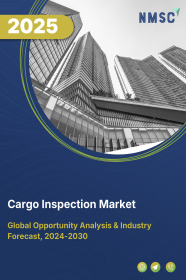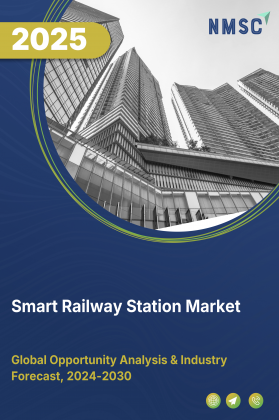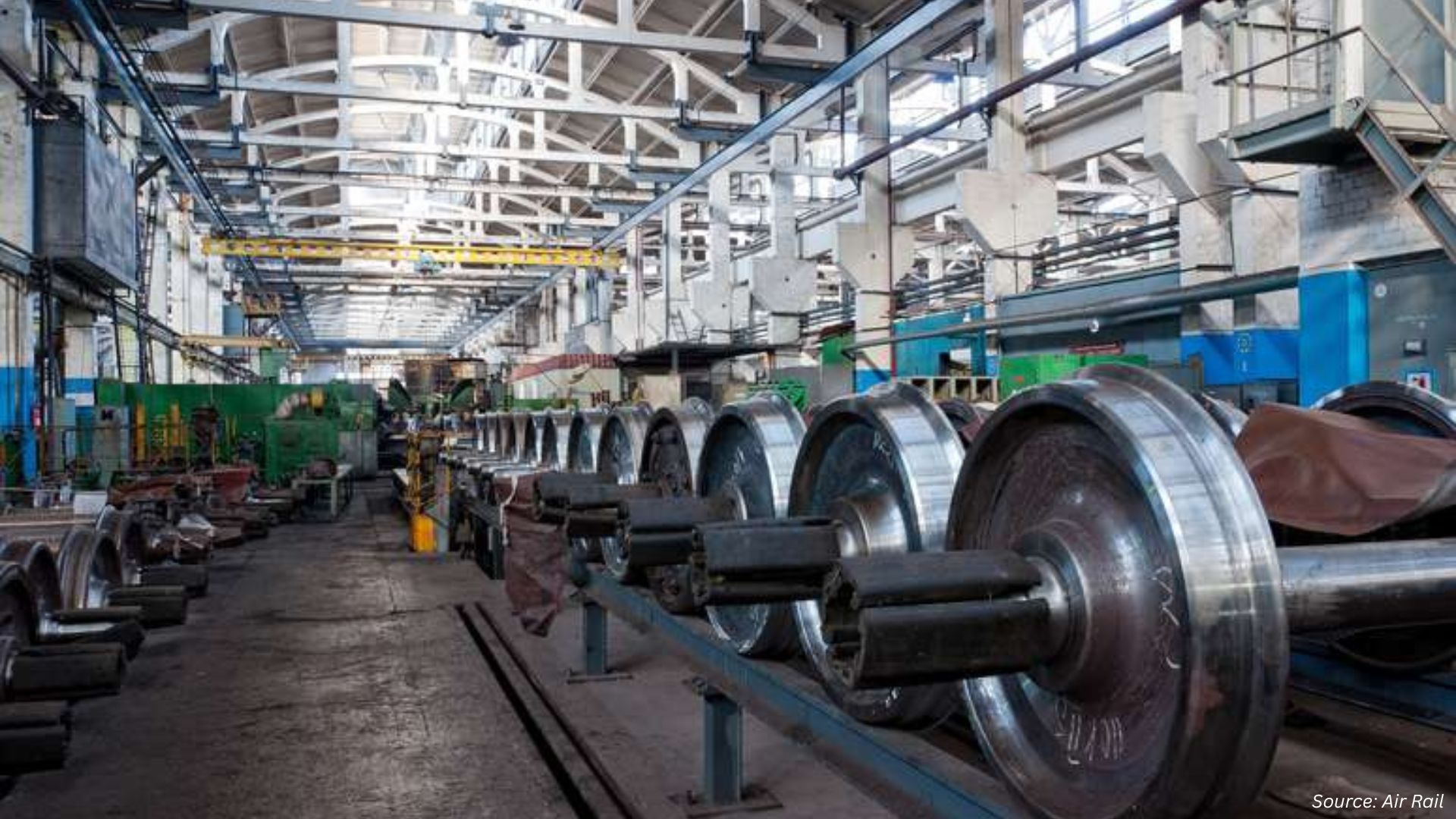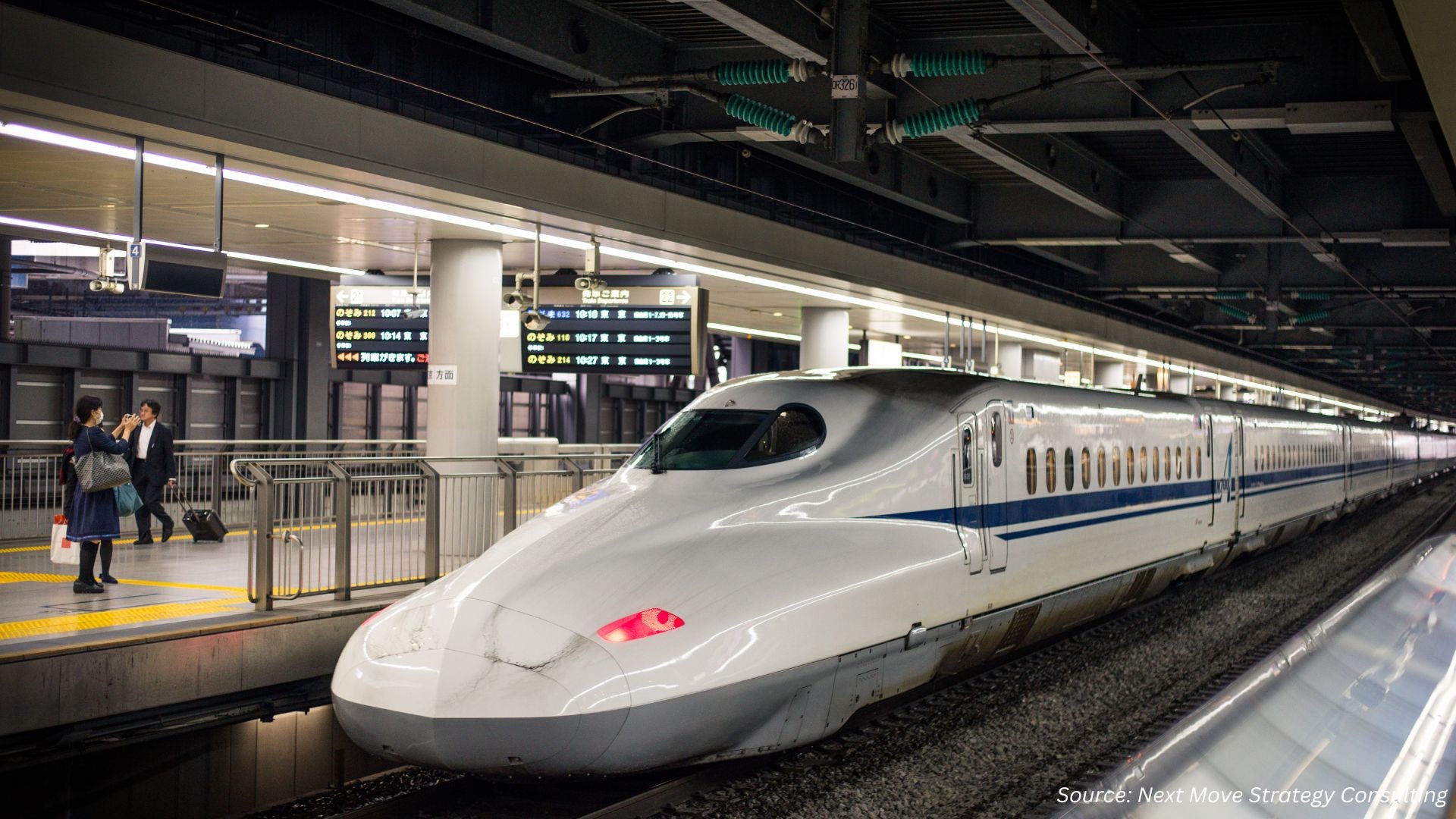
Cargo Inspection Services Market by Inspection Method (Manual Visual, Non-Destructive, Chemical & Material Analysis, Document Verification, IoT Monitoring, Sampling & Testing), by Service Offering (Container, Bulk Cargo, Threat & Vehicle Inspection, Weighing, Lab Testing), by Inspection Stage (Pre-Shipment, In-Transit, Destination, Post-Delivery, Hazardous Handling), by Cargo Type, by End-Use Industry, and by Inspection Location – Global Opportunity Analysis and Forecast, 2025–2030
Industry Overview
The global Cargo Inspection Market size was valued at USD 3.42 billion in 2024 and is predicted to reach USD 3.58 billion by the end of 2025. The industry is predicted to reach USD 4.49 Bn by 2030 with a CAGR of 4.47% from 2025-2030.
The market is witnessing strong growth driven by rising global security concerns, increased trade volumes, and growing demand for efficient air cargo logistics. Heightened threats like terrorism and smuggling have prompted stricter enforcement of cargo inspection protocols to protect public safety and trade integrity, while the steady increase in global merchandise trade and air freight activity has further intensified the need for robust inspection solutions.
However, the industry faces challenges due to the high costs of advanced technologies and skilled manpower, which may hinder adoption, particularly among smaller players. Despite this, the integration of artificial intelligence and robotics is creating substantial future opportunities, with smart systems enhancing detection accuracy, automation, and efficiency, ultimately positioning the market for continued innovation and expansion.
Surge in Global Security Concerns Boosts Market Growth
Rising global security threats such as terrorism and smuggling have compelled governments to enforce stricter cargo inspection measures to safeguard trade integrity, and protect public safety. This growing emphasis on security is reflected in data published by the UK government in 2024, which reported a total of 217,644 drug seizures by police forces and the Border Force in England and Wales, a 13% increase from the previous year.
This surge was driven by a 6% rise in police seizures and a significant 57% increase by the Border Force. These figures highlight the mounting need for robust monitoring systems and comprehensive cargo inspection protocols to combat illegal activities. Consequently, the demand for advanced transportation security solutions is expected increase the substantial growth.
Increase in Trade of Various Commodities Fuels Market Expansion
The market is witnessing steady growth due to the rising global trade of goods, which increases the need for stringent inspection to ensure compliance, safety, and quality. For instance, the World Trade Organization presented a report in April 2024, in which they stated that the world merchandise trade volume was projected to rise by 2.6% in 2024 and 3.3% in 2025. This surge in global trade is prompting manufacturers and exporters to enhance shipment quality and compliance, driving demand for advanced cargo inspection technologies and accelerating growth worldwide.
Growing Demand in Air Cargo Promotes Growth of the Market
The cargo inspection market demand is experiencing notable growth due to the rising demand for air cargo transport and logistics, which play a critical role in ensuring the safe, efficient, and regulation-compliant movement of goods across international borders. This trend is supported by a 2024 report published by the International Air Transport Association, which shows that Asia-Pacific airlines recorded the highest year-on-year air cargo demand growth at 14.5%, with a corresponding 11.3% increase in capacity, while December alone saw an 8.4% rise in demand and a 6.3% increase in capacity.
Additionally, in 2025, the IATA stated that the total global demand, measured in cargo tonne-kilometres (CTK), rose by 5.8% compared to March 2024 levels, including an additional 6.5% increase in international operations. This steady rise in air cargo activity is directly contributing to the growing need for advanced cargo inspection technologies, as businesses and regulatory bodies seek to ensure speed, safety, and compliance, ultimately fuelling the cargo inspection market expansion.
High Costs Hinders the Cargo Inspection Market Growth
The industry faces notable challenges due to the high costs associated with advanced equipment, cutting-edge technology, and skilled personnel. These substantial expenses create barriers for smaller companies and those in developing regions, limiting their ability to compete and ultimately restraining overall growth.
Integration of AI and Robotics in Cargo Inspection Creates Future Growth Opportunities
The integration of artificial intelligence into the industry presents significant opportunities for future market growth. AI-driven technologies such as autonomous inspection systems, route optimization, and predictive maintenance are making robotic cargo checking more intelligent, efficient, and reliable. These advancements are expected to play a crucial role in expanding the adoption of automated inspection solutions in the coming years.
Additionally, cargo screening equipment is increasingly being equipped with smart algorithms capable of identifying a growing range of hazardous materials and contraband, further enhancing detection accuracy and operational efficiency, positioning AI as a key driver of innovation and opportunity within the market.
Market Segmentation and Scope of the Study
The cargo inspection market report is segmented by inspection method, service offering, inspection stage, cargo type, end-use industry, and inspection location. Inspection methods include manual visual checks, non-destructive inspection (NDI), chemical/material analysis, compliance verification, IoT-based monitoring, and sampling tests. Service offerings cover container, bulk cargo, vehicle, and threat inspections, along with weighing, measurement, and lab testing. By the inspection stage, the market spans pre-shipment, in-transit, destination, post-delivery, and hazardous material inspections. Cargo types include containerized, break bulk, dry and liquid bulk, perishable, project, hazardous, and pharmaceutical cargo. End-use industries range from oil and gas, mining, agriculture, food and beverage, healthcare, automotive, electronics, and retail to logistics, renewable energy, and marine sectors. Inspections are conducted at seaports, air cargo terminals, land borders, rail terminals, warehouses, cross-docking hubs, cold chain sites, and factory/origin field locations.
Geographical Analysis
North America remains a pivotal region for the cargo inspection market share, supported by its high international trade activity and strict compliance standards. In 2024 alone, the United States imported pharmaceutical products worth $212 billion—highlighting the scale and sensitivity of goods moving through its borders. The inspection of such high-value and temperature-sensitive shipments is essential to uphold product integrity, meet regulatory requirements, and mitigate supply chain risks. This reinforces North America's strategic importance in the global cargo inspection ecosystem.
Europe is becoming a key growth market for the industry, as non-intrusive inspection technologies at borders gain momentum to detect contraband, counterfeit goods, and other illicit materials in line with the European Commission’s customs security priorities. Supporting these efforts, In March 2025, UNODC held a regional workshop in Podgorica, Montenegro, under its PCCP program to boost cargo control and border security in South-Eastern Europe, in partnership with the EU4FAST Project and EU-UNODC Joint Action. These initiatives highlight the growing role of advanced inspection technologies and international cooperation in shaping a secure and efficient cargo movement ecosystem across Europe.
The Asia-Pacific region, particularly India, is experiencing rapid trade growth driven by expanding port activity and the development of smart ports. This momentum is directly fuelling the cargo inspection sector. The International Trade Administration in a 2025 report states that India’s port infrastructure is projected to reach $8.99 billion by 2030, supported by a significant government investment plan of $82 billion by 2035. These developments are enhancing the factors that necessitate advanced cargo inspection systems to ensure security, regulatory compliance, and streamlined logistics in the region’s growing cargo inspection landscape.
In the Rest of the World region, including Latin America, the Middle East, and Africa, the market is gradually gaining momentum, driven by sector-specific demands and growing trade activity. In the Middle East, the oil and gas industry play a pivotal role in national economies, significantly influencing cargo volumes and inspection requirements.
For instance, a 2024 report from Get Global Group shows that in Saudi Arabia, oil revenues contribute around 42% of the GDP and account for 90% of export earnings. This heavy reliance on energy exports which underscores the critical need for robust cargo inspection systems to ensure the safe, compliant, and efficient movement of high-value goods. As trade flows intensify and regulatory scrutiny increases, the demand for advanced inspection services across these regions is poised to grow steadily.
Competitive Landscape Adopted by Key Players
Various market players operating in the cargo inspection industry are:
-
In 2025, SGS announced the award of a new three-year contract in Tanzania to manage the country’s Pre-Shipment Verification of Conformity (PVoC) program. This milestone underscores SGS’s continued commitment to ensuring the highest standards of quality and safety for products entering the Tanzanian market.
-
In 2024, Intertek—a global leader in Total Quality Assurance—was contracted by ASC Shipbuilding, a subsidiary of BAE Systems Australia, to deliver comprehensive non-destructive, destructive, and materials testing services for the construction of ship units and blocks under the Hunter Class Frigate (HCF) Program. This partnership highlights the critical role of advanced inspection and testing solutions in ensuring the structural integrity and compliance of high-value cargo components, reinforcing the importance of cargo inspection services in defense and maritime logistics.
-
In 2024, TÜV SÜD acquired Carspect Group Holding AB to strengthen its presence in three high-growth markets. This strategic move enhances TÜV SÜD’s capabilities in vehicle and cargo inspection services, leveraging Carspect’s innovative, customer-centric inspection model and digital process integration. The acquisition aligns with the growing demand for efficient, tech-enabled inspection solutions, reinforcing TÜV SÜD’s position in the evolving market for cargo inspection.
Key Benefits
-
The report provides quantitative analysis and estimations of the industry from 2025 to 2030, assisting in identifying the prevailing market opportunities.
-
The study comprises a deep-dive analysis of the current and future cargo inspection market trends to depict prevalent investment pockets in the sector.
-
Information related to key drivers, restraints, and opportunities and their impact on the industry is provided in the report.
-
Competitive analysis of the players, along with their market share, is provided in the report.
-
SWOT analysis and Porter's Five Forces model are elaborated in the study.
-
Value chain analysis in the market study provides a clear picture of the roles of stakeholders.
Cargo Inspection Market Key Segments
By Inspection Method
-
Manual Visual Inspection
-
Non-Destructive Inspection (NDI)
-
Chemical & Material Analysis
-
Document & Compliance Verification
-
Remote IoT/Automated Monitoring
-
Sampling & Quality Testing
By Service Offering
-
Container Inspection
-
Bulk Cargo Inspection
-
Cargo & Threat Inspection
-
Vehicle & Equipment Inspection
-
Weighing & Measurement Services
-
Laboratory Testing Services
By Inspection Stage
-
Pre-Shipment Inspection
-
Loading & In-Transit Inspection
-
Destination Inspection
-
Post-Delivery & Returns Inspection
-
Special Handling & Hazardous Materials
By Cargo Type
-
Containerized Cargo
-
Break Bulk Cargo
-
Dry Bulk
-
Liquid Bulk
-
Refrigerated/Perishable Cargo
-
Project Cargo
-
Hazardous Materials
-
Temperature-Sensitive Pharmaceuticals
By Inspection Location
-
Seaports & Container Terminals
-
Air Cargo Terminals
-
Land Border Crossings (Road)
-
Rail Freight Terminals
-
Warehouses & Distribution Centers
-
Cross-Docking Facilities & E-Commerce Hubs
-
Cold Chain Facilities
-
Factory/Origin Field Sites
By End-Use Industry
-
Oil, Gas & Petrochemicals
-
Metals & Mining
-
Agriculture, Food & Beverage
-
Healthcare & Pharmaceuticals
-
Automotive & Aerospace
-
Electronics & High-Tech
-
Retail & Consumer Goods
-
Logistics & 3PL Warehousing
-
Renewable Energy & Marine
By Region
-
North America
-
The U.S.
-
Canada
-
Mexico
-
-
Europe
-
The U.K.
-
Germany
-
France
-
Italy
-
Spain
-
Denmark
-
Netherlands
-
Finland
-
Sweden
-
Norway
-
Russia
-
Rest of Europe
-
-
Asia-Pacific
-
China
-
Japan
-
India
-
South Korea
-
Australia
-
Indonesia
-
Singapore
-
Taiwan
-
Thailand
-
Rest of Asia-Pacific
-
-
RoW
-
Latin America
-
Middle East
-
Africa
-
Key Players
-
SGS
-
Bureau Veritas
-
Intertek Group
-
TÜV SÜD
-
DEKRA IN
-
DNV AS
-
ALS
-
Cotecna
-
Alex Stewart International
-
Camin Cargo Control
-
Swiss Approval International
-
QIMA
-
Eurofins Scientific
-
Ruswal Global Inspections LTD
-
Nordic Maritime Solutions
REPORT SCOPE AND SEGMENTATION:
|
Parameters |
Details |
|
Market Size in 2025 |
3.58 Billion |
|
Revenue Forecast in 2030 |
4.49 Billion |
|
Growth Rate |
CAGR of 4.47% from 2025 to 2030 |
|
Analysis Period |
2024–2030 |
|
Base Year Considered |
2024 |
|
Forecast Period |
2025–2030 |
|
Market Size Estimation |
Billion |
|
Growth Factors |
|
|
Countries Covered |
28 |
|
Companies Profiled |
15 |
|
Market Share |
Available for 10 companies |
|
Customization Scope |
Free customization (equivalent to up to 80 working hours of analysts) after purchase. Addition or alteration to country, regional, and segment scope. |
|
Pricing and Purchase Options |
Avail customized purchase options to meet your exact research needs. |

















 Speak to Our Analyst
Speak to Our Analyst

























